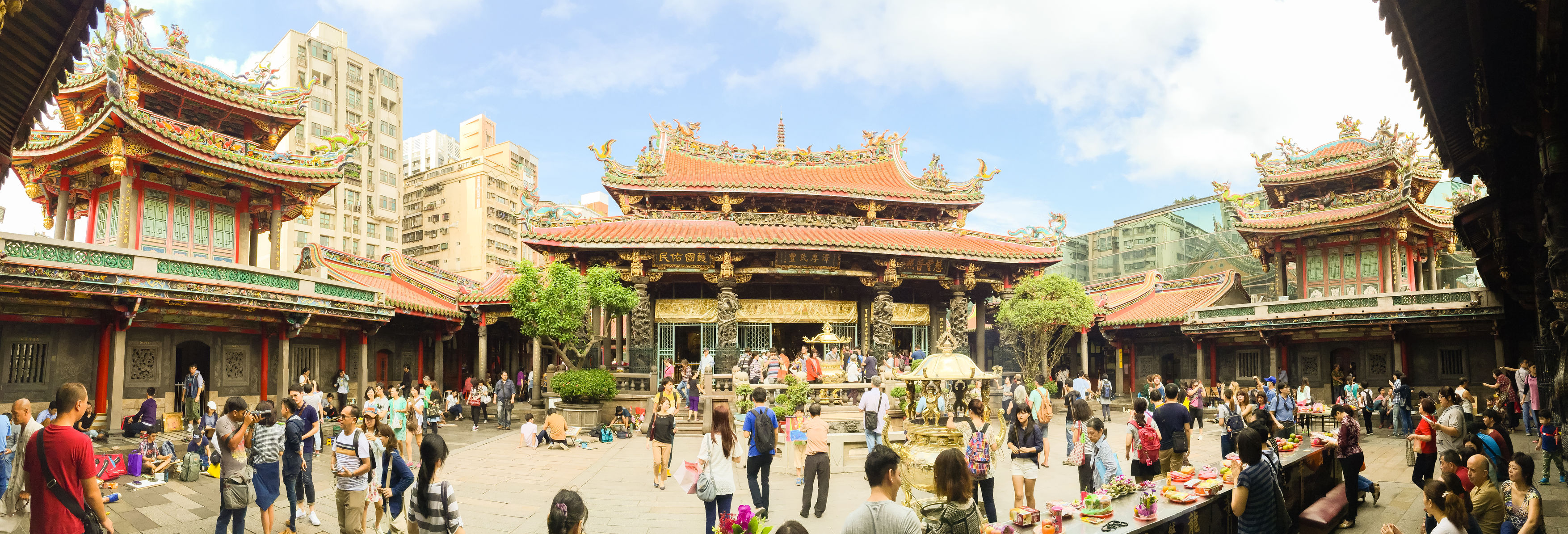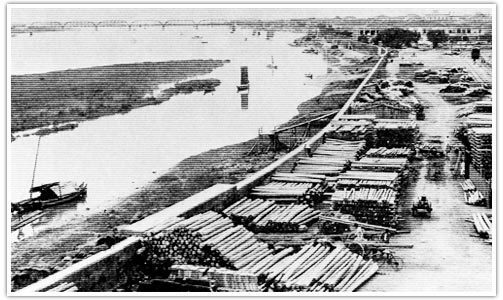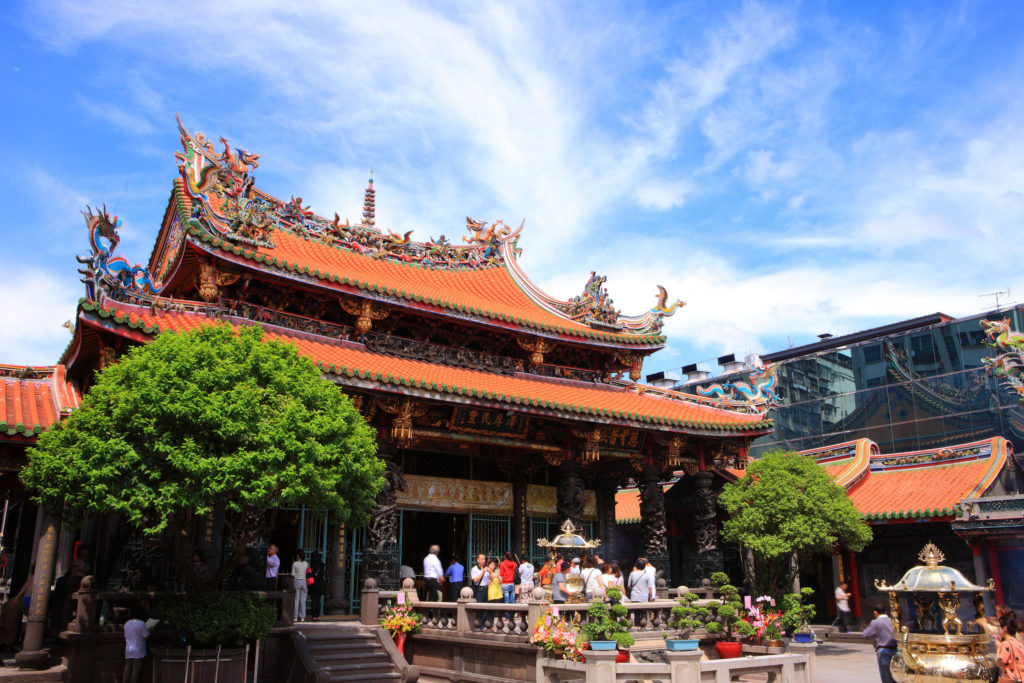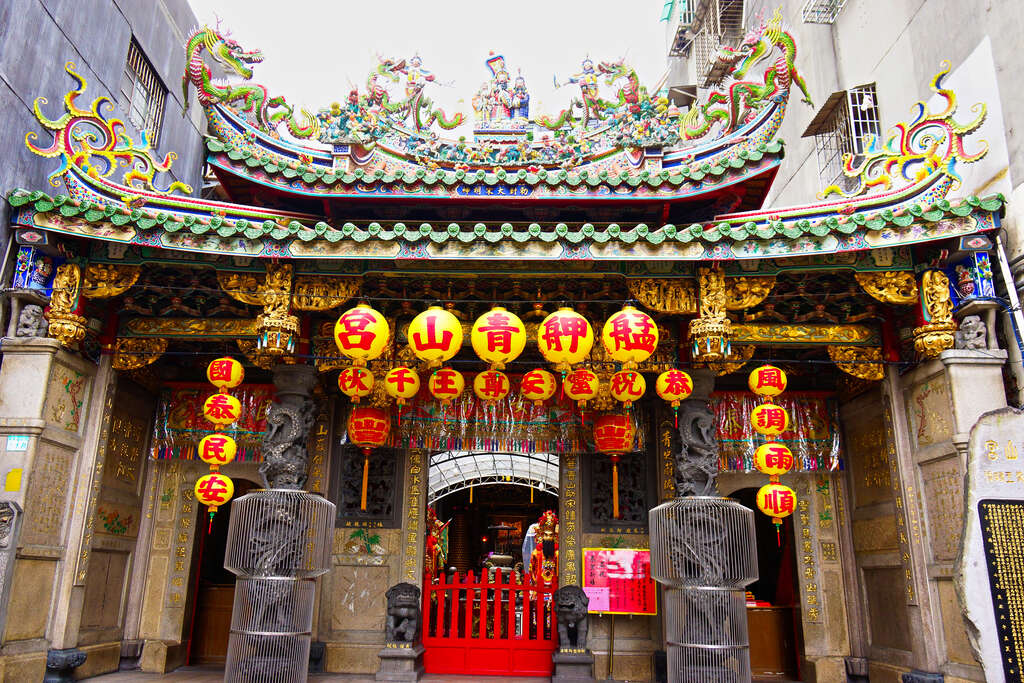
Last time when we talked about Dadaocheng, we mentioned Manga. Before Dadaocheng came thriving, the most prosperous place was Manga. You can say that Monga was the first to be developed in Taipei. In the 17th century, Monga was marked as “Handelsplaasts” by the Dutch, which means the trading place.
In early 18th century, some resident from southeastern mainland China, went across the Taiwan Strait and settled down around a port by the Tamsui River. The aboriginal people then carry their hunting products by the canoes to trade with the new settlers. The aborigine call the canoe Bangka, therefore the new settlers called the port Bangka in Hokkien(which gradually became Taiwanese). Because of the port and the river, Bangka soon turned flourish. After the 1860s, the port started to decline due to the sand accretion, and the business port was replaced by Dadaocheng.

*In Mandarin, Bangka is pronounced Monga
Though Monga is not the commercial hub in Taipei anymore, the streets still keep its style of 18th century. Let’s read the history of Monga by taking a walk at the area.
Longshan Temple

The main deity of Longshan Temple is Guanyin. As more and more people moved to Monga, the temple became the center of the area. The temple was built in 1738 and designed in the style of Chinese palace. The architecture of the temple shows the greatest craftsmanship of the time. The artworks carved on the granite wall represent Chinese folklore stories and calligraphy. The roof is constructed by dougong, without any nail or steel.
Chingshan Temple

Chingshan temple is the religious center of Monga. In the 18th century, there was a severe plague in Monga. The fish folks invited Chingshan King to Monga. People who were ill came here to pray for health, so the king had more and more disciples. The god is regarded as the guardian of sex workers, because they believe the god can protect them from infectious disease.
Grass Lane

When you walk on Xichang street by Longshan temple, you will breathe in a thick smell of grass. The air is filled with refreshing grass. At the narrow short lane there are more than 10 grass shops and venders. During the pioneering time of Monga, there are multiple epidemics. However, there weren’t enough certified doctors, so the grass shops became the folklore clinics. People cooked the prescribed grass soup to cure the diseases. Though the grass soup cannot be recognized as medicine, the grasses can still be beneficial to your health.
Bopiliao

Bopiliao is an old community formed in early 18th century, and has been through the time of Qing dynasty, Japanese colonized era and R.O.C. The buildings at the block reflects the urban scene of Qing dynasty. A walk on the street is a venture into the old generation. The view on the street will slow down your pace to appreciate the beauty of traditional architectures.
Xinfuting cultural market

The market was built in 1935, and it was the first modern market that met the new hygiene standard in Taiwan. The architecture is a horse hoof volume. The shape of the plan makes a clear, simple circulation for people to do shopping. The center of the hoof was designed as a courtyard so the market can be equipped with nice natural day light. After World War II, the market was the center of the local community. However, the prosperity faded as there were more and more market opened to the public. In recent years, the market is reopened after renovation. Now there are cafe, restaurant, exhibition space organized in the building.

留言